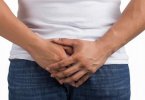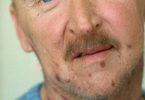What's in this article?
What is erectile dysfunction?
Erectile dysfunction, is the inability to achieve or sustain an erection suitable for sexual intercourse. Causes include medications, chronic illnesses, poor blood flow to the penis, drinking too much alcohol, or being too tired.
Having erection trouble from time to time isn’t necessarily a cause for concern. If erectile dysfunction is an ongoing issue, however, it can cause stress, affect your self-confidence and contribute to relationship problems. Problems getting or keeping an erection can also be a sign of an underlying health condition that needs treatment and a risk factor for heart disease.
How common is erectile dysfunction?
Erectile dysfunction (ED, impotence) varies in severity; some cannot have an erection at all, whereas other men sometimes have troubles getting a hard erection, and others get a hard erection but it only lasts for a short period of time. Approximately 50% of men over the age of 40 have troubles with erectile dysfunction.
While erectile dysfunction can occur at any age, the risk of developing erectile dysfunction increases with age. According to the Massachusetts Male Aging Study, the prevalence of erectile dysfunction was 52% in men 40-70 years of age. The prevalence of complete erectile dysfunction increases from 5% at 40 years of age to 15% among men 70 years of age and older.
What causes erectile dysfunction?
A variety of physical and psychological or emotional issues can cause ED. Physical causes include damage to the nerves, arteries, smooth muscles, and fibrous tissues in the penis. Diseases and disorders that cause damage and can lead to ED include
- high blood pressure
- diabetes, a complex group of diseases characterized by high blood glucose, also called high blood sugar or hyperglycemia
- atherosclerosis, the buildup of a substance called plaque on the inside of arteries
- heart and blood vessel disease
- chronic kidney disease
- multiple sclerosis, an autoimmune disease that attacks the nerves
- injury from treatments for prostate cancer, including radiation and prostate surgery
- injury to the penis, spinal cord, prostate, bladder, or pelvis
- surgery for bladder cancer
- Peyronie’s disease, a disorder in which scar tissue, called a plaque, forms in the penis
Lifestyle choices, such as smoking, drinking too much alcohol, using illegal drugs, being overweight, and not exercising, can lead to ED.
Psychological or emotional issues, such as the following, can also contribute to ED:
- anxiety
- depression
- fear of sexual failure
- guilt
- low self-esteem
- stress
Even when ED has a physical cause, psychological or emotional factors may make the condition worse. For example, a physical problem that slows a man’s sexual arousal can create anxiety, which can worsen the ED.
In addition, ED can be a side effect of many common medications, such as blood pressure medications, antihistamines, antidepressants, tranquilizers, appetite suppressants, and ulcer medications. MedlinePlus, a website of the U.S. National Library of Medicine, provides a list of specific medications that can cause ED.
Symptoms of erectile dysfunction
Erectile dysfunction is different from other conditions that affect sexual intercourse. Here’s information on the symptoms of ED, what makes you more likely to develop the condition, and what you can do to lower your risk for it.
How is erection sustained?
As blood flows into the penis, the corpora cavernosa swell, and this swelling compresses the veins (blood vessels that drain the blood out of the penis) against the tunica albuginea. By compressing the veins, blood is prevented from leaving the penis. This creates a hard erection. When the amount of cGMP decreases by the action of a chemical called phosphodiesterase type 5 (PDE5), the muscles in the penis tighten, and the blood flow into the penis decreases. With less blood coming into the penis, the veins will not be compressed and will drain blood out of the penis, and the erection goes down.
Treatment of erectile dysfunction
Depending on the cause and severity of your erectile dysfunction and any underlying health conditions, you might have various treatment options. Your doctor can explain the risks and benefits of each treatment and will consider your preferences. Your partner’s preferences also might play a role in your treatment choices.
Oral medications
Oral medications are a successful erectile dysfunction treatment for many men. They include:
- Sildenafil (Revatio, Viagra)
- Tadalafil (Adcirca, Cialis)
- Vardenafil (Levitra, Staxyn)
- Avanafil (Stendra)
All four medications enhance the effects of nitric oxide — a natural chemical your body produces that relaxes muscles in the penis. This increases blood flow and allows you to get an erection in response to sexual stimulation.
Taking one of these tablets will not automatically produce an erection. Sexual stimulation is needed first to cause the release of nitric oxide from your penile nerves. These medications amplify that signal, allowing some men to function normally. Oral erectile dysfunction medications are not aphrodisiacs, will not cause excitement and are not needed in men who get normal erections.
The medications vary in dosage, how long they work and side effects. Possible side effects include flushing, nasal congestion, headache, visual changes, backache and stomach upset.
Your doctor will consider your particular situation to determine which medication might work best. These medications might not treat your erectile dysfunction immediately. You might need to work with your doctor to find the right medication and dosage for you.
Before taking any medication for erectile dysfunction, including over-the-counter supplements and herbal remedies, get your doctor’s OK. Medications for erectile dysfunction do not work in all men and might be less effective in certain conditions, such as after prostate surgery or if you have diabetes. Some medications might also be dangerous if you:
- Take nitrate drugs — commonly prescribed for chest pain (angina) — such as nitroglycerin (Minitran, Nitro-Dur, Nitrostat, others), isosorbide mononitrate (Monoket) and isosorbide dinitrate (Dilatrate-SR, Isordil)
- Have heart disease or heart failure
- Have very low blood pressure (hypotension)
Other medications
Other medications for erectile dysfunction include:
- Alprostadil self-injection. With this method, you use a fine needle to inject alprostadil (Caverject Impulse, Edex) into the base or side of your penis. In some cases, medications generally used for other conditions are used for penile injections on their own or in combination. Examples include papaverine, alprostadil and phentolamine. Often these combination medications are known as bimix (if two medications are included) or trimix (if three are included).
Each injection is dosed to create an erection lasting no longer than an hour. Because the needle used is very fine, pain from the injection site is usually minor.
Side effects can include mild bleeding from the injection, prolonged erection (priapism) and, rarely, formation of fibrous tissue at the injection site.
- Alprostadil urethral suppository. Alprostadil intraurethral (Muse) therapy involves placing a tiny alprostadil suppository inside your penis in the penile urethra. You use a special applicator to insert the suppository into your penile urethra.
The erection usually starts within 10 minutes and, when effective, lasts between 30 and 60 minutes. Side effects can include pain, minor bleeding in the urethra and formation of fibrous tissue inside your penis.
- Testosterone replacement. Some men have erectile dysfunction that might be complicated by low levels of the hormone testosterone. In this case, testosterone replacement therapy might be recommended as the first step or given in combination with other therapies.





